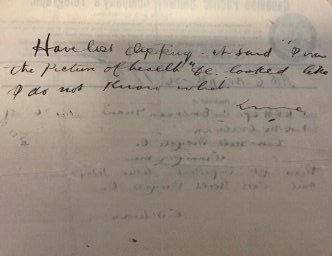I had a recent text conversation with my Boss:
Boss: Can you give me a call when you have a free moment?
Me: Ok. I’ll call in 15, Judy wrapping something up…
Boss: Judy?
Me: *Just, not Judy?! Not sure who Judy is?
I feel like I have an autocorrect text mishap at least daily, either on receipt or on sending. Still, I’d maintain that the errors are worth the ability to have instant messaging with anyone, anywhere, anytime.
While travelling recently through the Midwest leg of my journey around the world, I was immensely grateful for this technology while on a self-guided trail at the Theodore Roosevelt National Park (TRNP). You may recall, dear reader, that in Karl Chronicles #58 I was equipped with my bear spray while hiking near a herd of bison. Notwithstanding that I subsequently learned this would not have been an effective deterrent, I did have a backup plan — texting my partner in Nova Scotia. I alerted him that if the herd of bison moves closer to my hiking trail I may need help. I sent my GPS coordinates, the phone number of the TRNP south unit, the name of the trail I was on and roughly my whereabouts, all with the caveat: “If I text HELP, initiate the sequence to get me assistance”.
I dislike so many things about technology, but the ability to communicate, especially when travelling solo in precarious situations, more than compensates for my objections.
When Karl was travelling in 1899, he wrote letters home to his family advising them of his next stop on his route and where he would be staying for at least a few days to receive a letter back. Karl would account for the time it would take to receive his letter and the response letter written and mailed. Sometimes he had already moved on to a new town and missed the correspondence, although he would request the postmasters forward to the next post office on his route.
Contrary to my ability to send “emergency texts”, the only way Karl could communicate expediently back then was via telegraph.
Thanks to the new railway from coast to coast via the Canadian Pacific Railway (CPR), the electric lines provided the perfect opportunity to add telegraph lines. A trans-Canada telegraph line between Nova Scotia and British Columbia was operational in 1886. The first to use this telegraph was none other than Mr Van Horne, who sent a message to then Prime Minister John A. Macdonald that the transcontinental railroad was complete.
The telegraph communication applied morse code consisting of short and long tones (dots and dashes) sent over the cables using electrical current. A qualified operator received the codes and transcribed them into a message. I don’t have any record that Karl sent messages via telegraph, but I have a copy of one he received while on this leg of the journey on August 26, 1899.
On the letterhead of the Canadian Pacific Railway Company’s Telegraph, which stated the following Terms and Conditions: All messages are received by this Company for transmission, subject to the terms and conditions printed on their Blank Form No. 2, which terms and conditions have been agreed to by the sender of the following message. This is an unrepeated message and is delivered by request of the sender under these conditions.
The names were then listed of the CPR senior personnel:
Sir William C. Van Horne, President.
Homer Pingle, Supt., Toronto, Ont.
Chas. R. Hosmer, Manager Telegraphs.
J. Wilson, Supt., Vancouver, B. C.
B. S. Jenkins, Supt., Winnipeg, Man.
James Kent, Supt., Montreal, Que.
The message was from Emerson, Manitoba, to Karl M. Creelman, Care Goold Bicycle Company, stating:
Please get important letter todays mail Care Goold Bicycle Co.
C.J. Lewis
On the back of the telegraph is a note written by Karl as follows: “Have last clipping, it said, “I was the picture of health”.
My interpretation is that a letter was sent to Karl via the Goold Bicycle Company letting him know that his letter with perhaps a photograph was received and the image was complementary. But on the other hand, codes were subject to interpretation and in this respect, like my autocorrect, this is as clear as “Judy wrapping up”!
Front of the Telegraph
Back of the Telegraph
In case you’ve missed them, click here for more Karl Chronicles



